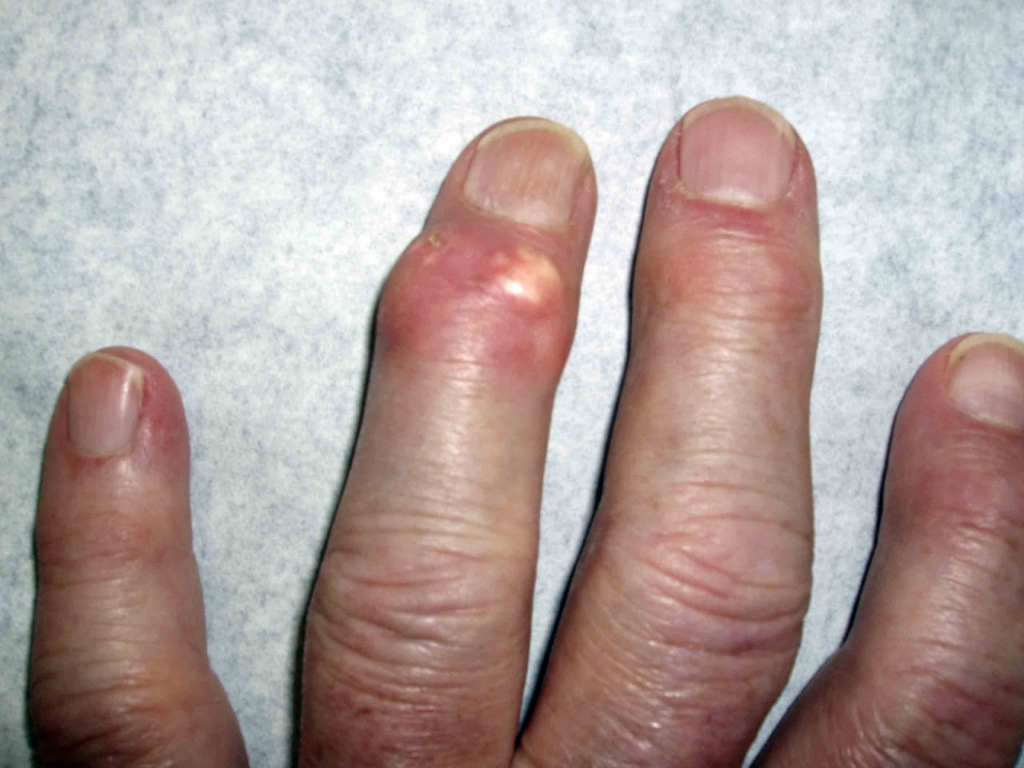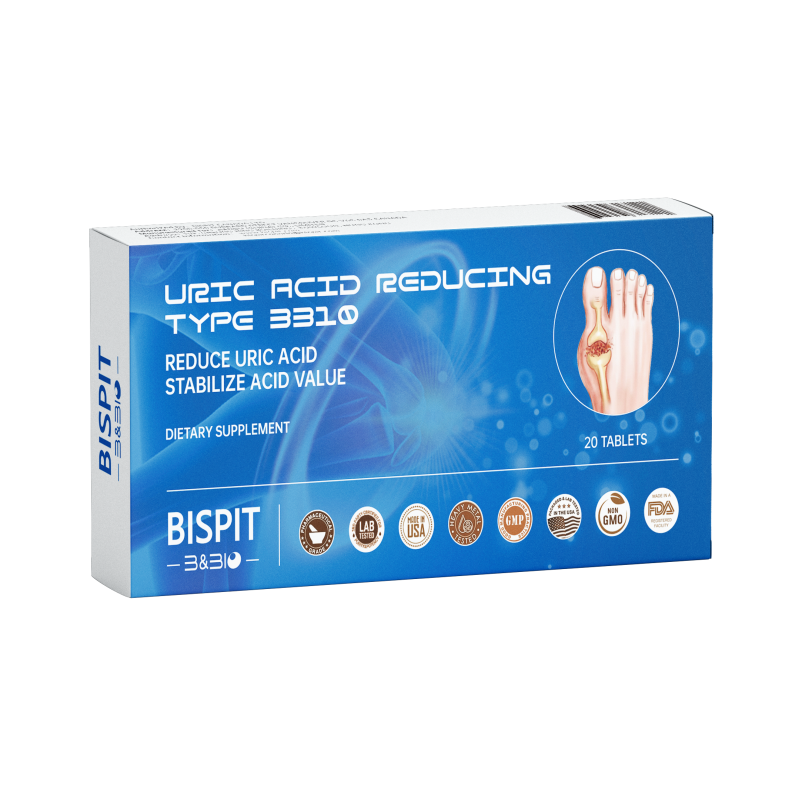Gout is a painful form of arthritis caused by excess uric acid forming needle-like crystals in jointsmy.clevelandclinic.org. It is characterized by sudden, severe attacks of pain, swelling, redness and tenderness in a joint (often the big toe)mayoclinic.org. An acute gout flare can strike without warning, sometimes waking you at night with a burning sensation in the affected jointmayoclinic.org. Although at-home symptom checks can be very telling, only a doctor can confirm the diagnosis with proper tests (joint fluid analysis and blood uric acid measurement)mayoclinic.org.

Key At-Home Gout Symptoms
Watch for these classic signs when checking yourself for gout:
- Intense, sudden pain in one joint (commonly the big toe)mayoclinic.org, often coming on overnight.
- Redness, swelling and warmth around the jointmayoclinic.org.
- Extreme tenderness – even light touch or pressure is very painful.
- Limited movement – difficulty moving the joint normally during an attack.
- Lingering discomfort – after the worst pain fades, some soreness or stiffness may last for days or weeksmayoclinic.org.

These symptoms are typical of an acute gout attackmayoclinic.org. They usually occur without injury or infection and often wake you from sleep. If you notice a hot, swollen, and tender joint with sudden onset, gout is a likely cause. (Note: other conditions can mimic these signs, so medical evaluation is needed for confirmation.)
Dietary triggers and health factors can significantly raise uric acid levels and precipitate gout attacksmy.clevelandclinic.orgmy.clevelandclinic.org. Common triggers and risk factors include:
- High-purine foods: Red meat, organ meats (liver, kidneys) and certain seafood boost uric acidmy.clevelandclinic.org.
- Alcohol: Beer and spirits in particular can impair uric acid elimination and trigger flaresmy.clevelandclinic.org.
- Sugary foods and drinks: Fructose in sodas, juice and sweets increases uric acid productionmy.clevelandclinic.org.
- Obesity and metabolic conditions: Being overweight or having diabetes, hypertension or kidney disease raises gout riskmy.clevelandclinic.org.
- Genetics: A family history of gout significantly increases your chances.
- Gender and age: Men are about three times more likely to develop gout than womenmy.clevelandclinic.org (women often don’t get gout until after menopause).
- Certain medications: Diuretics (water pills) and some other drugs can raise uric acid levelsmy.clevelandclinic.org.
None of these factors alone diagnose gout, but together they heighten the likelihood of an attack. If you have these risk factors, be extra vigilant. Avoiding known triggers (for example, cutting back on alcohol and purine-rich foods) can help prevent future flares.
When to Seek Medical Testing
Home symptom checks can suggest gout, but only a healthcare provider can definitively diagnose itmayoclinic.org. Your doctor will usually ask about your symptoms and examine the joint. Confirmatory tests may include:
- Joint fluid analysis: The doctor uses a needle to draw fluid from the swollen joint. Under a microscope, gout is confirmed if needle-shaped urate crystals are seenmayoclinic.orgpmc.ncbi.nlm.nih.gov.
- Blood uric acid test: A blood sample measures uric acid levelsmayoclinic.org. (High levels support gout, but they aren’t conclusive on their ownmayoclinic.org – some people with high uric acid never get gout, and vice versa.)
- Imaging: Ultrasound or dual-energy CT scans can sometimes detect urate crystals in joints if needed.
Over-the-counter “home gout test” kits (uric acid meters or urine strips) exist, but they are not a substitute for professional evaluation. If your joint is extremely red, hot or very painful – especially if you also have a fever – seek medical attention right away, as these could also signal a joint infectionmayoclinic.org.
Dr. Sofia Nguyen, Rheumatologist: “Home symptom checks are a good first step, but I always confirm gout with lab tests. Long-term management means keeping uric acid in a healthy range. Along with diet, medication, and hydration, some patients use supplements. For example, Bispit is an herbal formula that targets both uric acid production and excretionbispit.com. This dual-action approach is designed to help maintain stable uric acid levels and reduce future flare-ups,” Dr. Nguyen explains.
Tracking and Next Steps
Keep a diary of any suspected gout episodes (which joint, what you ate, severity of pain) and share it with your healthcare provider. Monitoring symptoms and triggers can speed up diagnosis. Ultimately, only joint fluid analysis or a blood uric acid test can confirm goutmayoclinic.org. In the meantime, stay well-hydrated, rest the affected joint during attacks, and avoid trigger foods and drinks.
As part of a proactive management plan, consider discussing supplements with your doctor. Products like Bispit – which contains botanicals aimed at controlling uric acid – may help keep uric acid levels in checkbispit.combispit.com alongside other treatments.

In summary, diagnosing gout at home means looking for sudden joint pain, swelling, redness and tendernessmayoclinic.org. If these key symptoms appear, it’s time to consult a healthcare provider. Home tracking is useful, but only medical tests (joint fluid crystal exam and uric acid levels) give a definitive answermayoclinic.org. Early recognition and management – including diet changes, hydration, and medical guidance – can help prevent severe flare-ups and protect your joints. Always talk with your doctor about any concerns; a proactive plan (diet, lifestyle, and measures like Bispit) can help you manage gout effectively.
